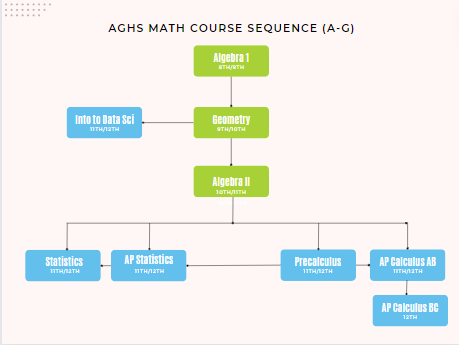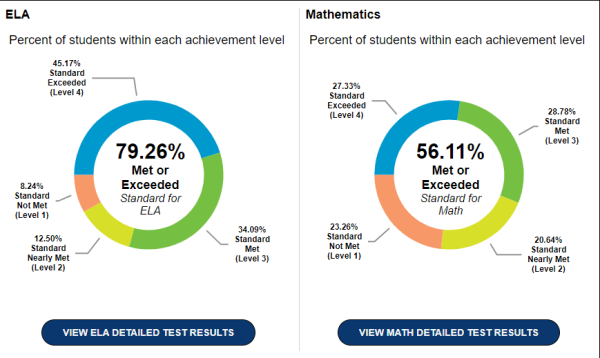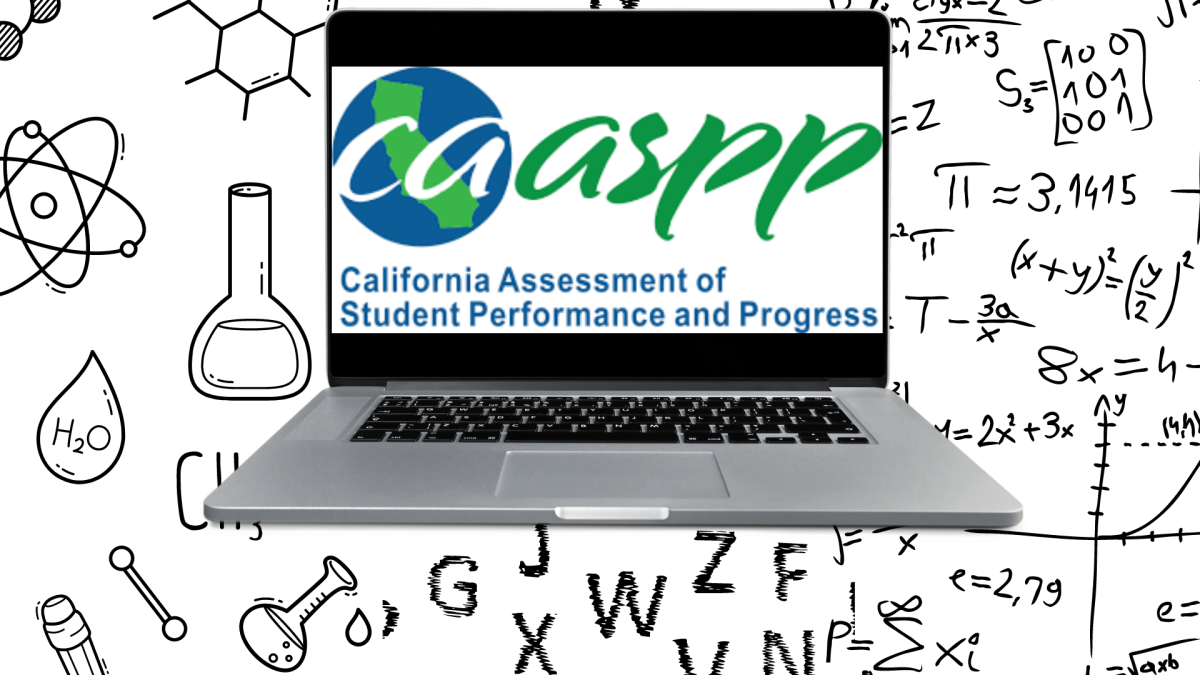The California Assessment of Student Performance and Progress (CAASPP) is a mandated standardized test that most 11th-graders in public California high schools complete. The test measures students’ understanding of California’s common core state standards for Science, ELA, and Math and also measures potential college readiness.
Every public California high school must have 95% of each demographic group consisting of 20 or more students test.
According to AGHS’ School Accountability Report Card (SARC), the school demographic breakdown is as follows:
50% White

39.9% Hispanic or Latino
4.1% Two or More Races
2.2% Asian
1.3% Filipino
1% Black or African American
0.3% American Indian or Alaska Native
0.2% Native Hawaiian or Pacific Islander
Student performance on the CAASPP test measures the rigor of the high school’s curriculum and assesses if students understand critical California Common Core standards. Students who score a 4 on the ELA or Mathematics exam can use their scores to place out of certain California State University (CSU) courses.
Arroyo Grande High students struggle to perform well on the CAASPP Mathematics exam, with only 30% of students meeting or exceeding the standard. Conversely, 63% of our students meet or exceed the standard on the ELA exam. The first thing to assess is our math curriculum’s structure and course offerings.
Here’s a visual diagram of the AGHS math course sequence.

Something questionably unique about the AGHS math department is the lack of a two-tiered honors program. Under a two-tier honors program, students can take the more rigorous Honors courses or College Prep courses. This allows students to choose classes best aligned with their future interests, like whether or not they want to pursue a STEM major. It also shrinks the knowledge gap between students, allowing teachers to move at a pace aligned with student proficiency.
“Making an honors program allows for those who need to get challenged now not be sitting and twiddling their thumbs…honors is for those really really pushing themselves, not just doing ok, where right now if you’re just doing ok, you might get bumped to a different level,” Dan Hoffman, precalculus and CAR teacher said.
At AGHS if students fail the first semester of Geometry or Algebra 2, they’re bumped from the A-G math course sequence. If students wish to become A-G eligible, they must take that course through summer school or again the following year. Hoffman expressed that students should take the full year—fail it—and then re-take it, so they at least get through all the material one time.
For high-achieving students, the single-tier math course sequence simply isn’t rigorous enough for students who want a challenge and adequate preparation for higher mathematics.
“I feel like when I was in Algebra 2 it was a lot easier for me, but a lot of students struggled and they needed more help. Honestly, I feel like we could’ve been put into an honors program and that could’ve helped us when we skipped [precalculus] to calculus,” Sherry Andrawes (’24) said.
Starting this year, incoming AGHS freshmen and sophomore students can take Integrated Accelerated Math I/II. These courses require a teacher’s recommendation and prepare students for higher mathematics like AP Calculus.
“If you’re in middle school and take Algebra 1, you can jump into the accelerated math for freshman year which, you’re kind of doing Algebra 1 with Geometry and then the sophomore year would be finishing up Geometry and get Algebra 2 in there, which will prepare you for AP Calculus, so it should also have some Trigonometry in there as well,” AGHS Head Counselor, Yusdivia Mosqueda said.
The up-and-coming accelerated math program, while it’s a little late in the game, is a step in the right direction for the AGHS math department, CAASPP scores, and most of all students who need that extra challenge.
At San Luis Obispo High School, just 20 minutes north of AGHS, 79% of students meet/exceed the ELA standards, and 56% meet/exceed the mathematics standards. SLOHS has a two-tier honors and college prep math program.
While SLOHS performs better on the state test, the demographics of SLOHS vary slightly from AGHS.
56.7% White

31.3% Hispanic or Latino
5% Two or More Races
4.2% Asian
1.2% Filipino
0.7% Black or African American
0.1% American Indian or Alaska Native
0.2% Native Hawaiian or Pacific Islander
Here’s a visual diagram of the SLOHS math course offerings.

The SLOHS math department offers a strong precalculus program including college prep and honors precalculus. SLOHS offering both the honors and college prep precalculus courses indicates that these courses have strong enrollment. At AGHS, our precalculus program isn’t as popular since many students decide to either skip to AP Calculus AB or take Statistics/AP Statistics instead.
While the demographics of a high school can affect test scores, they don’t mean everything. Clovis West High located in the Central Valley, has higher minority enrollment than AGHS and SLOHS, yet they perform better than AGHS on the Math exam and better than SLOHS and AGHS on the ELA exam.
Clovis West Demographics:

32.5% White
47.7% Hispanic or Latino
8.6% Asian
6% Black or African American
3.3% Two or More Races
1.1% Filipino
0.4% American Indian or Alaska Native
0.2% Native Hawaiian or Pacific Islander
Clovis West High utilizes an integrated math curriculum with a two-tier honors program. Math 3 Honors is so rigorous that students who pass with an A in the class, can skip AP Calculus AB and go straight to AP Calculus BC. At AGHS to take AP Calculus BC you have to first pass AP Calculus AB. The option to skip the AP Calculus AB course isn’t possible even if students take precalculus.

As current AGHS juniors prepare to take the CAASPP Math, ELA, and Science exams it’s important to remember that even though student performance on these exams doesn’t impact student grades directly, it’s an important tool for high schools in measuring student performance. Colleges also use these scores to gauge the rigor of a high school curriculum. Students should try to the very best of their ability.








